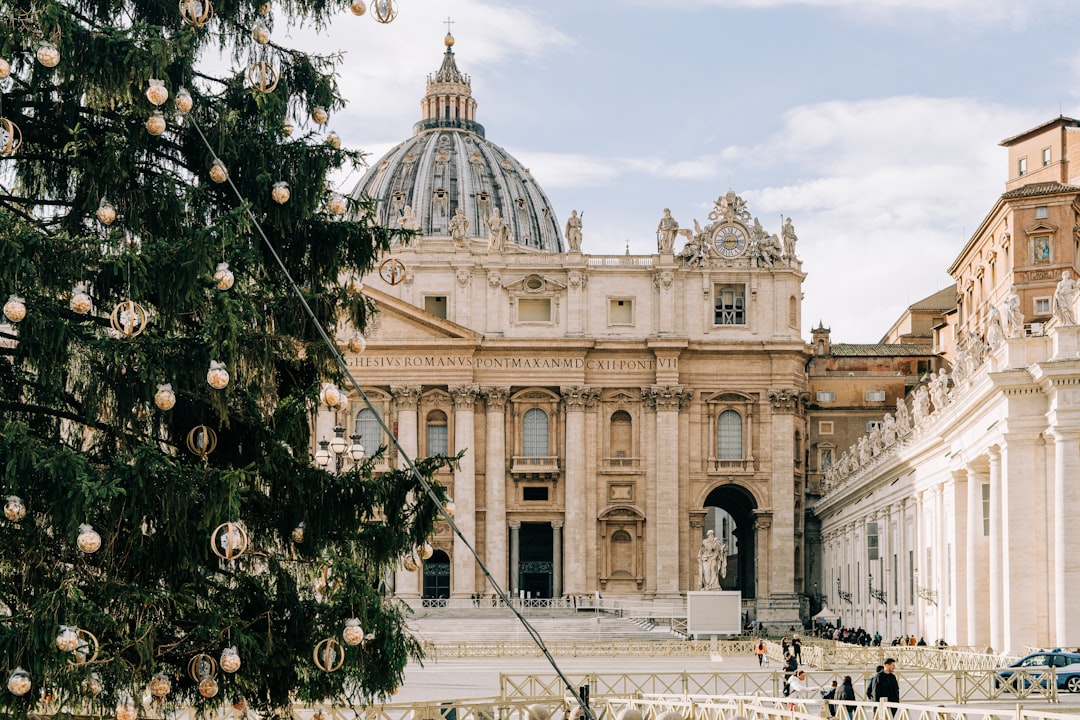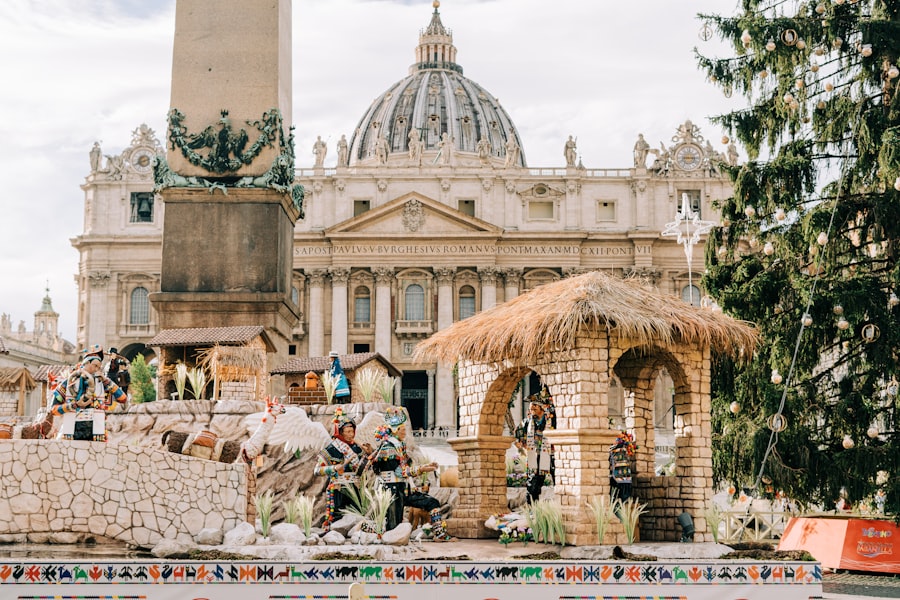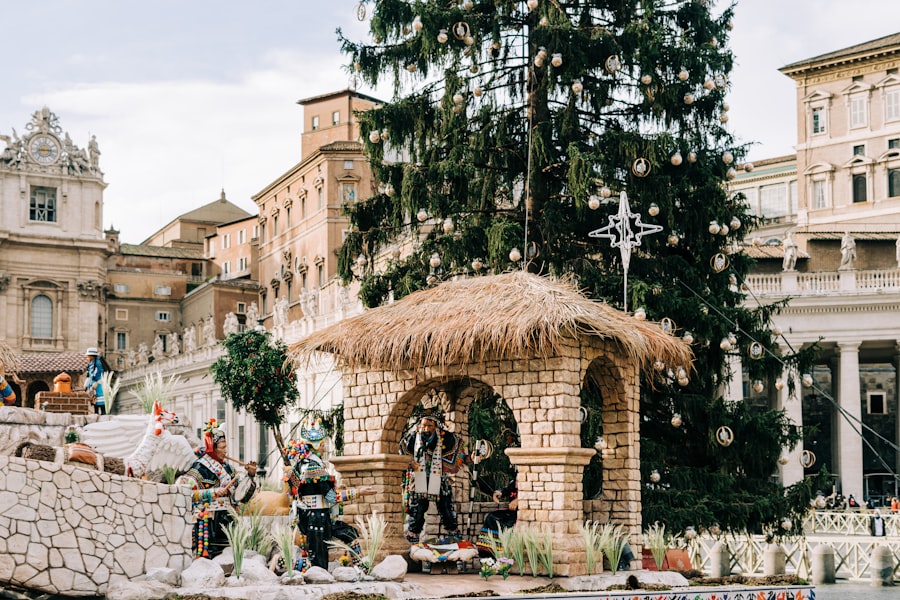
Vatican City, an independent city-state enclaved within Rome, Italy, is the spiritual and administrative center of the Roman Catholic Church. Covering an area of approximately 44 hectares (110 acres), it is the smallest internationally recognized independent state in the world, both in terms of area and population. Established as a sovereign entity in 1929 through the Lateran Treaty, Vatican City serves as the residence of the Pope and is home to numerous religious and cultural treasures.
Its unique status as a theocratic state, governed by the Pope, sets it apart from other nations, making it a focal point for millions of pilgrims and tourists alike. The significance of Vatican City extends beyond its religious importance; it is a treasure trove of art, history, and architecture. The city-state is a UNESCO World Heritage Site, recognized for its extraordinary contributions to culture and civilization.
Visitors flock to Vatican City not only to witness its spiritual grandeur but also to explore its rich artistic heritage, which includes masterpieces from renowned artists such as Michelangelo, Raphael, and Bernini. The juxtaposition of its sacred role and its artistic wealth creates a unique atmosphere that captivates all who enter its walls.
Key Takeaways
- Vatican City is the smallest independent state in the world, located within Rome, Italy.
- The historical and cultural significance of Vatican City is immense, as it is the center of the Roman Catholic Church and home to the Pope.
- Vatican City’s top sights and attractions include St. Peter’s Basilica, St. Peter’s Square, the Vatican Museums, and the Sistine Chapel.
- The Vatican Museums house an extensive collection of art and artifacts, including the famous Sistine Chapel ceiling painted by Michelangelo.
- When visiting Vatican City, it’s important to dress appropriately, book tickets in advance, and be prepared for large crowds, especially during peak tourist seasons.
Historical and Cultural Significance
The history of Vatican City is deeply intertwined with the evolution of Christianity and the Roman Catholic Church. The site has been a place of Christian pilgrimage since the martyrdom of Saint Peter, one of Jesus Christ’s apostles and the first Pope, who was believed to be buried beneath St. Peter’s Basilica. The construction of the basilica began in the early 16th century under Pope Julius II, marking a significant moment in Renaissance architecture. This monumental structure not only serves as a place of worship but also symbolizes the enduring legacy of the papacy and its influence on Western civilization. Culturally, Vatican City has played a pivotal role in the development of art and education throughout history. The Vatican’s patronage of artists during the Renaissance led to an explosion of creativity that produced some of the most iconic works in Western art. The Vatican Library, established in the 15th century, houses an extensive collection of manuscripts, books, and historical documents that are invaluable to scholars and historians. This commitment to preserving knowledge reflects the Vatican’s broader mission to promote education and understanding within the context of faith.
Vatican City’s Top Sights and Attractions

Vatican City is replete with remarkable sights that draw visitors from around the globe. Among its most notable attractions is St. Peter’s Basilica, an architectural marvel that stands as one of the largest churches in the world.
Its grand dome, designed by Michelangelo, dominates the skyline and serves as a beacon for pilgrims. Inside, visitors are greeted by breathtaking artworks, including Bernini’s magnificent Baldachin and Michelangelo’s Pietà, which evoke a profound sense of reverence. Another must-see attraction is St.
Peter’s Square, an expansive plaza that serves as the entrance to the basilica. Designed by Gian Lorenzo Bernini in the 17th century, the square is framed by a colonnade that symbolizes the embrace of the Church welcoming its followers. The central obelisk, originally erected in Heliopolis, Egypt, adds historical depth to the space.
During significant events such as papal audiences or Easter celebrations, St. Peter’s Square transforms into a vibrant gathering place for thousands of faithful and tourists alike.
The Vatican Museums and Sistine Chapel
| Metrics | Data |
|---|---|
| Number of visitors per year | 6 million |
| Size of the Vatican Museums | 13.7 acres |
| Number of rooms in the Vatican Museums | 54 |
| Number of artworks in the Vatican Museums | over 20,000 |
| Size of the Sistine Chapel | 5,600 square feet |
| Number of visitors per day | 25,000 |
The Vatican Museums are a testament to the Vatican’s commitment to art and culture, housing an extensive collection that spans centuries and styles. Established in the early 16th century by Pope Julius II, these museums contain over 70,000 works of art, with approximately 20,000 on display at any given time. The collection includes classical sculptures, Renaissance paintings, and contemporary art, reflecting the evolution of artistic expression through history.
One of the most famous sections of the Vatican Museums is the Sistine Chapel, renowned for its stunning frescoes painted by Michelangelo between 1508 and 1512. The chapel serves as a papal conclave venue where new popes are elected and is adorned with some of the most iconic images in Western art, including “The Last Judgment” on the altar wall and “The Creation of Adam” on the ceiling. The intricate details and vibrant colors of these masterpieces draw visitors into a spiritual experience that transcends time.
The Sistine Chapel not only showcases Michelangelo’s genius but also embodies the intersection of faith and artistry that defines Vatican City’s cultural landscape.
St. Peter’s Basilica stands as a monumental testament to Renaissance architecture and Christian devotion. Commissioned by Pope Julius II in 1506, it took over 120 years to complete, involving contributions from some of history’s greatest architects and artists.
The basilica’s façade is characterized by its grand entrance flanked by massive columns and topped with a striking dome that reaches a height of 136 meters (446 feet).
Inside St.
The interior is adorned with intricate mosaics, sculptures, and chapels dedicated to various saints. One of its most famous features is Michelangelo’s Pietà, which captures the poignant moment of Mary holding the lifeless body of Jesus.
This sculpture exemplifies Michelangelo’s mastery of form and emotion, drawing countless admirers who come to reflect on its profound message. St. Peter’s Square complements the basilica with its grand design; it features a circular layout surrounded by colonnades that create an inviting space for worshippers and tourists alike.
Tips for Visiting Vatican City
Visiting Vatican City can be an enriching experience if approached with some preparation and awareness. Given its popularity as a tourist destination, planning ahead is essential to make the most of your visit. One key tip is to book tickets for the Vatican Museums in advance to avoid long queues that can stretch for hours during peak seasons.
Many visitors opt for guided tours that provide insights into the rich history and significance of various artworks and sites within the museums. Another important consideration is timing your visit strategically. Early mornings or late afternoons tend to be less crowded, allowing for a more contemplative experience as you explore St.
Peter’s Basilica or admire the frescoes in the Sistine Chapel. Additionally, dress modestly when visiting religious sites; shoulders should be covered, and shorts or skirts should reach below the knee to respect the sacred nature of these spaces. Understanding Vatican City’s unique customs can enhance your visit as well.
For instance, attending a papal audience or mass can be a profound experience for many visitors; however, it requires advance planning due to limited seating and security protocols. Engaging with local guides or audio tours can also provide deeper context about the art and architecture you encounter. In conclusion, Vatican City offers an unparalleled blend of spiritual significance and artistic heritage that captivates millions each year.
From its historical roots tied to Saint Peter to its breathtaking architectural wonders like St. Peter’s Basilica and the Sistine Chapel, every corner reveals layers of meaning waiting to be explored. Whether you are drawn by faith or curiosity about art history, Vatican City promises an unforgettable journey into one of humanity’s most revered cultural landscapes.
If you’re intrigued by the unique and lesser-known destinations around the world, similar to the Holy See (Vatican City), you might find the article on Christmas Island Facts and Places to Visit quite fascinating. Like Vatican City, Christmas Island offers a blend of natural beauty and intriguing history, albeit in a completely different setting. This article provides insights into the island’s diverse ecosystems, rare wildlife, and the cultural blend that defines its small community, making it a compelling read for those interested in exploring exotic locales.
FAQs

What is the Holy See?
The Holy See refers to the central governing body of the Catholic Church, headed by the Pope. It is based in Vatican City, an independent city-state enclave within Rome, Italy.
What is Vatican City?
Vatican City is an independent city-state and the smallest country in the world, both in terms of area and population. It is the spiritual and administrative center of the Catholic Church and is the residence of the Pope.
What are some notable places and sights in Vatican City?
Vatican City is home to several iconic landmarks, including St. Peter’s Basilica, the Sistine Chapel, Vatican Museums, and the Apostolic Palace. These sites are renowned for their religious and artistic significance.
What is the significance of Vatican City to the Catholic Church?
Vatican City holds immense religious and cultural significance for the Catholic Church. It is the site of the Pope’s official residence, as well as many important religious ceremonies and events. The Vatican also houses a vast collection of religious art and artifacts.
Is Vatican City open to visitors?
Yes, Vatican City is open to visitors, and millions of tourists and pilgrims visit each year to explore its religious and cultural treasures. Visitors can tour St. Peter’s Basilica, the Vatican Museums, and the Sistine Chapel, among other attractions.



